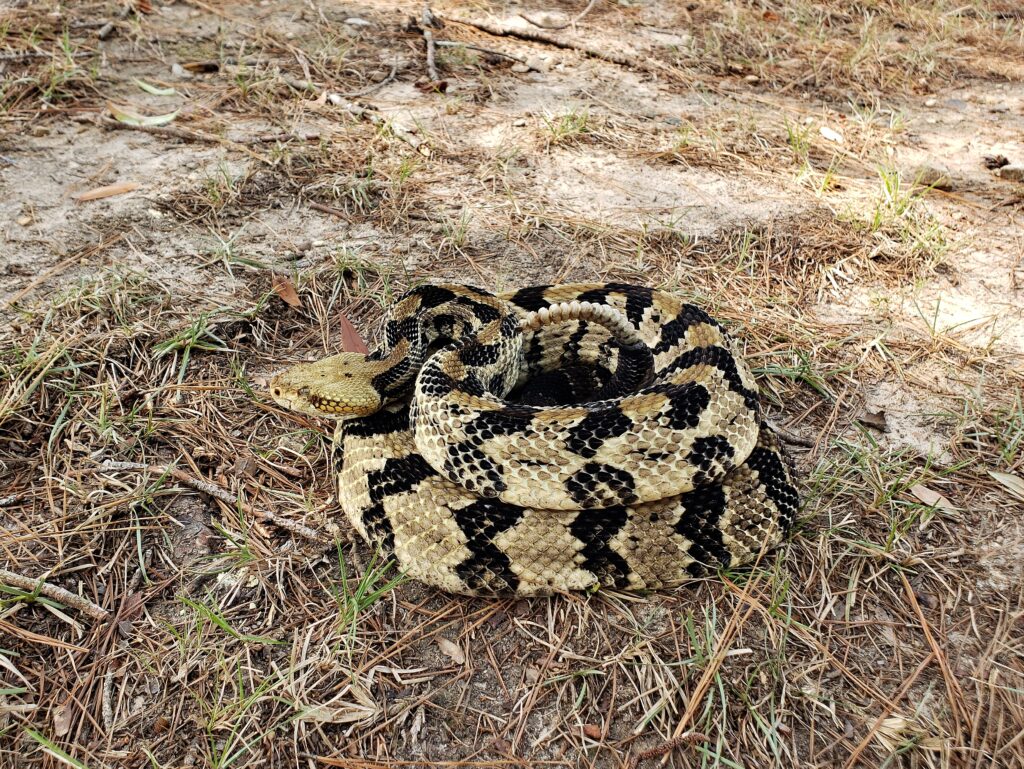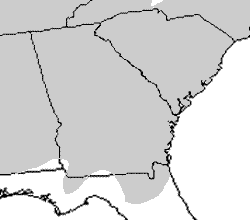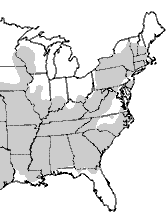Canebrake / Timber Rattlesnake (Crotalus horridus) – Venomous



Photos by Amanda Hurst unless otherwise noted
Description: The canebrake and timber rattlesnake are the same species. As a whole, it is normally yellow, brown, or gray with chevrons or crossbands. The belly is yellow to a whitish grey. Canebrake rattlesnakes are lighter in coloration and their background color has a pink tint. Timber rattlesnakes can have a darker gray, black to lighter brown background to their coloration. Both canebrake and timber rattlesnakes are the same species.
Range: They can be found throughout the southeast from mountainous areas to Coastal Plains. In the mountainous regions, they are normally referred to as Timber Rattlesnakes. While in the Coastal Plains, they are called Canebrake Rattlesnakes.
Habitat: Timber/Canebrake rattlesnakes can be found throughout terrestrial habitats. While they do not often come around urbanized areas, they can occasionally be found near residential areas.
Habits: These rattlesnakes spend some time hibernating during the coldest months of the year. In mountainous areas, Timber rattlesnakes hibernate in communal dens and have been noted to be found with copperheads. Canebrake rattlesnakes hibernate solely. Rattlesnakes become active in late spring and will be seen throughout the summer through early fall. These snakes are diurnal but will move during hot summer nights. Timber rattlesnakes can forage up to 4 miles from their den sites for food or to find a mate.
Food: ambush predators – eating small mammals, including rabbits and squirrels
Reproduction: Females mature between 5-10 years old and will only mate every 2 to 3 years, depending on food availability. They mate in late summer and fall but occasionally will breed in the spring. Females store sperm in oviducts over winter and fertilize eggs in the spring. They give birth to litters of 6-18 babies in summer or early fall. Female timber rattlesnakes in the mountains get together on large rocky outcrops. These sites help with thermoregulation during gestation and serve as protected sites. Females stay with their babies until they are about 2 weeks old or until they shed their first skin.
Conservation status: Like all rattlesnakes, Timber/Canebrake rattlesnakes are threatened by habitat destruction and urban development.
Pertinent References:
Gibbons, W., and Dorcas, M. 2015. Snakes of the southeast. University of Georgia Press.
Account author: K. M. Ford
